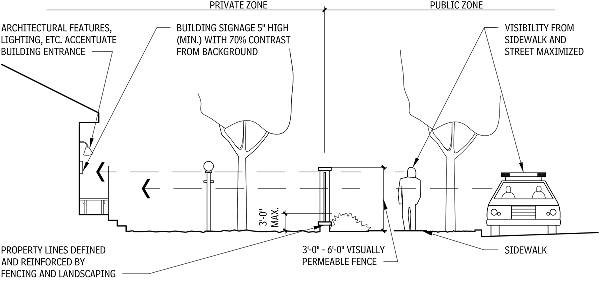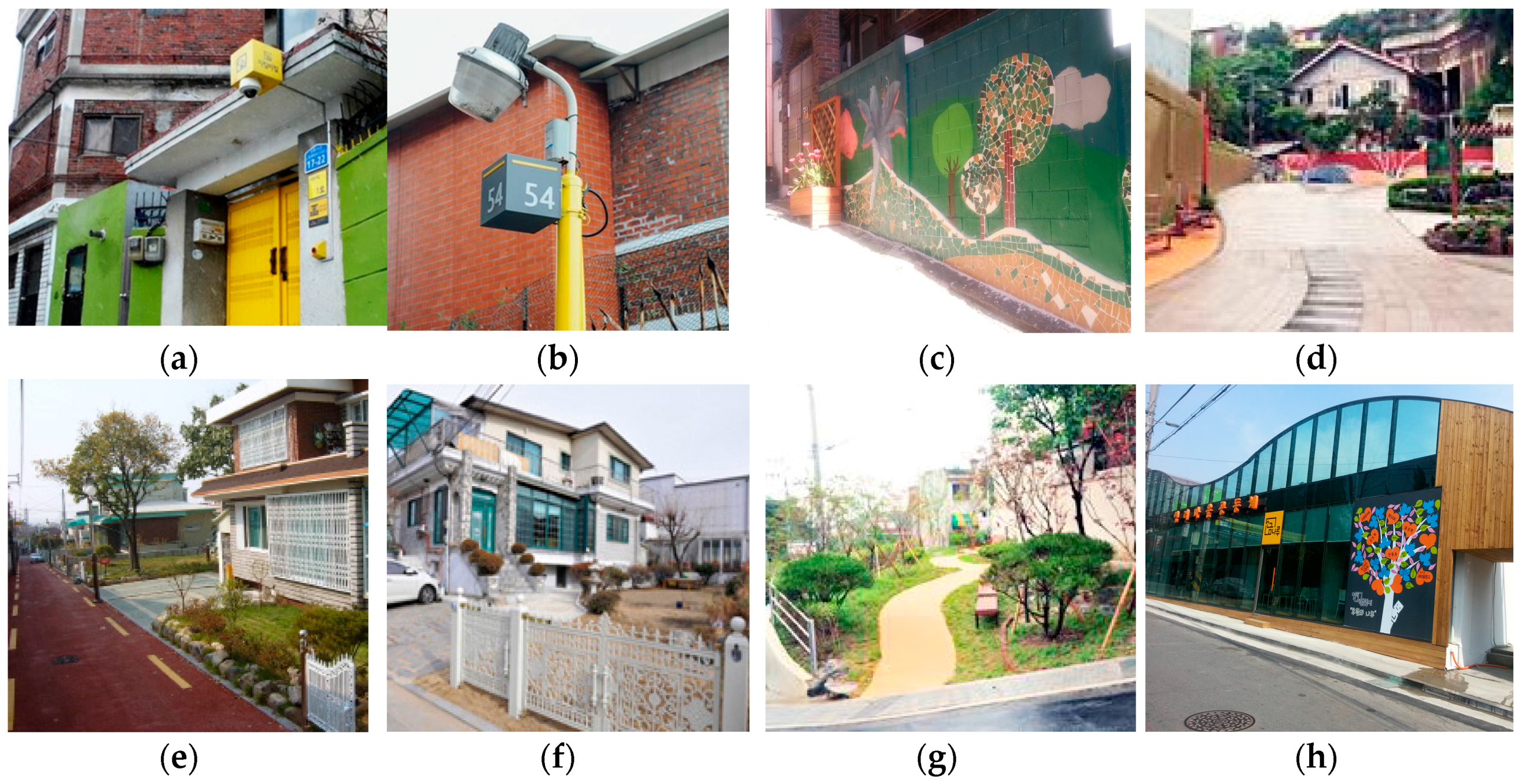
Because the Design Out Crime initiative has only been fully underway for about 18 months and represents a preventative approach to crime, its crime reductions may be difficult to quantify. Many projects currently being processed through the City’s development approval process have incorporated the Design Out Crime techniques. However, since the program remains in an early phase, many of the projects reviewed under this initiative have not been completed. Future crime statistics in the area of these projects could prove useful indicators of the relative success of these efforts.
Fort Walton Beach targets vagrancy, crime through new environmental design downtown - Get The Coast
Fort Walton Beach targets vagrancy, crime through new environmental design downtown.
Posted: Wed, 20 Dec 2023 08:00:00 GMT [source]
Access Control Examples and Interventions
The insertion of target hardening into CPTED, and the removal of motive reinforcement, signaled a shift away from social cohesion and neighborhood renewal toward a focus on physical, crime-opportunity reduction. This was informed, no doubt, by academic studies beginning in the late 1970s and early 1980s about crime and opportunities. “In the seventies, offender-based research started to focus on the rational spatial and environmental choices made by offenders.” (van Soomeren, 1996). CPTED strategies aim to reduce victimization, deter offender decisions that precede criminal acts, and build a sense of community among inhabitants so they can gain territorial control of areas, reduce crime, and minimize fear of crime. Territorial reinforcement promotes social control through increased definition of space and improved proprietary concern.An environment designed to clearly delineate private space does two things.
How violent crime compares with property crime
Morales said the division has been able to work specifically to address property crimes in 2023, with overtime details and special taskforces that she said enabled her to drop the rate of motor vehicle burglaries from near 45% to 28% in the first two months of the year. Building a large wall around a religious building based on a perceived crime risk, for instance, might not be the best response. This is particularly the case if, when the crime risks are analysed, the building has only suffered incidents of minor graffiti. The expensive wall then needlessly divides the community and provides a blank canvas for more graffiti. Funding SourcesThe Design Out Crime program has accomplished wonders on a shoestring budget. The Los Angeles City Council allocated $25,000 for the program — $10,000 (40%) for training of staff, $10,000 (40%) for the production of the video, and $5,000 (20%) for the production of the written guidelines.
utilizing Crime Prevention Through Environmental Design principles to make communities
One form of proactive strategy is Crime Prevention Through Environmental Design, or CPTED (pronounced sep-ted). CPTED is a plan or project that uses specific design principles to work toward deterring criminal behavior while positively impacting the image and usage of an area or facility. Olga Camacho-Duarte also advocates for a participatory approach to address crime prevention and community safety in her paper, which focuses on a case study of a project in a disadvantaged area of New South Wales in Australia. The emphasis, once again, is on design processes and how they can positively influence partnerships and community development by offering rich visualisations of future scenarios (Cross, 2011; Thorpe and Gamman, 2011).
The crime rate in your LA neighborhood
Observer Actors — These actors are still considered to be positive users and are as important as normal actors, with a casual inclination. Designing space for observers is essential and equally important to ensuring the safety of those merely passing through or just enjoying a lunch break. Normal Actors — In parks and recreation, these are the frequent visitors, volunteers, runners, hikers, fishermen/women, bicyclists, program attendees, who use a facility. You want to focus your efforts on assuring that your normal users continue to be positively engaged with your organization. It is important to avoid creating hiding spaces in alleys, storage yards, and loading areas. For example, although in some cases hedges can define spaces, they also have the potential to provide convenient hidings spaces if placed too close together.
Building Resilience: Crime Prevention Through Environmental Design

Legitimate activity for a space or dwelling is encouraged through the use of natural surveillance and lighting, and architectural design that clearly defines the purpose of the structure or space. Crime prevention and design strategies can discourage illegal activity and protect a property from chronic problem activity. A design concept intended to make intruders easily observable, natural surveillance is promoted by features that maximize visibility of people, parking areas, and entrances. Examples are doors and windows that look onto streets and parking areas, pedestrian-friendly sidewalks and streets, front porches, and adequate nighttime lighting. Security design and access control is more than bars on windows, a security guard booth, a camera, or a wall. Crime prevention involves the systematic integration of design, technology, and operation for the protection of three critical assets-people, information, and property.
Los Angeles Crime
Natural surveillance measures can be complemented by mechanical and organizational measures. For example, closed-circuit television (CCTV) cameras can be added in areas where window surveillance is unavailable. The Field Guide delivers suppliers, vendors and service providers to park and recreation agencies throughout the United States and Canada.
can be tailored to your individual needs. Whether you are a private individual,

Cities need to find creative, cost-effective ways to stop crime on the front-end and reduce the need to solve our crime problems only by adding more police officers. The Police Department’s Crime Prevention Unit also consults with private developers to incorporate CPTED techniques into projects. The Police Department also now participates in the City’s Permit Processing Network, an inter-agency task force that reviews complex development projects. CPTED is among the most resilient crime prevention theories of the modern era, primarily because it works so well in practice and because, on the surface, many CPTED solutions appear common sense. However, in practice, implementation of CPTED solutions often lacks a rigorous process of analysis and application which results in simplified and poorly thought-out solutions. Poorly applied CPTED strategies can inadvertently cause harm by excluding some legitimate groups from areas or by displacing crime to other areas.
United States Property Crimes
Cheyenne Police Introduce New Crime Prevention Team News thecheyennepost.com - The Cheyenne Post
Cheyenne Police Introduce New Crime Prevention Team News thecheyennepost.com.
Posted: Mon, 11 Mar 2024 07:00:00 GMT [source]
Thematic analysis provides a bridge between problem and solution (Dorst and Tomkin, 2011) with the creation of a new frame (Schön, 1984; Lawson and Dorst, 2009) through which to view the problem. This process of frame creation creates a new context through which to generate solutions (see, for example, Lulham et al in Ekblom 2012 or Arvanitakis, 2013). This special issue is guest-edited by the organisers of the Design+Crime Conference who are based at the Designing Out Crime research centre (DOC) at the University of Technology, Sydney. Crime Prevention Through Environmental Design (CPTED) is a multi-disciplinary approach to crime prevention that uses urban and architectural design and the management of built and natural environments.
When people take pride in what they own and go to the proper measures to protect their belongings, crime is deterred from those areas because now it makes it more of a challenge. Natural access control is used to complement mechanical and operational access control measures, such as target hardening. This laid the foundation for Jeffery to develop a behavioral model aimed at predicting the effects of modifying both the external environment and the internal environment of individual offenders.
Another strategy is to use permeable fences that provide barriers to access without compromising visibility between buildings and the street. It can also result in locations that exclude certain groups of people, such as the young or the homeless. And some of these principles, if misapplied, can increase crime and fear of crime, reducing quality of life.
These principles were used in the Perth City Link project, reconnecting the central business district with the entertainment district by sinking the railway line. In 1973, architect Oscar Newman led a ground-breaking study comparing two New York social housing projects. Van Dyke (a high-rise building) had crime rates more than double those of Brownsville (a low-rise building). Given the similarity in populations, Newman argued the physical design of the buildings could explain this difference in crime. As with all CPTED principles, there are no single strategies that will reduce all crime; they should be applied in combinations based on a thorough analysis of the local context. However, the history of CPTED suggests that comprehensive urban planning and community development requires consideration of all First and Second Generation CPTED principles.


No comments:
Post a Comment